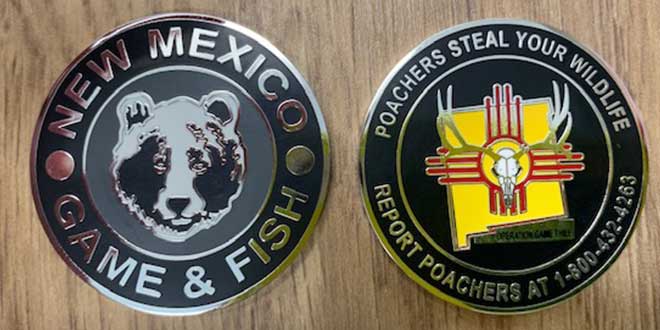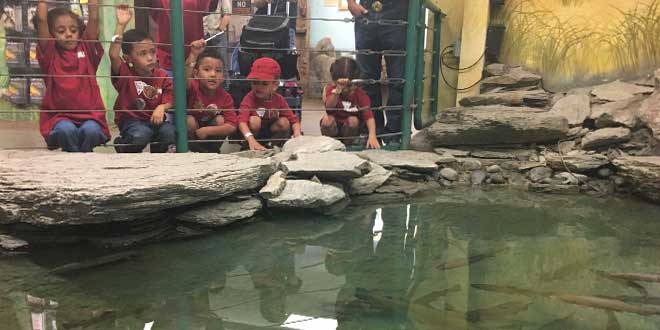Department of Game and Fish officers and staff were asked a lot of interesting questions at this year’s State Fair in Albuquerque. Visitors had an opportunity to learn about our programs and enjoy watching the rainbow trout in our pavilion’s pond.
We’re always thrilled to provide information about the Department and our state’s amazing wildlife. Here are several of those questions with answers we wanted to share with our Monthly Update readers:
It is unlawful to possess heads, horns, antlers or other parts of protected species found in the field without an invoice or permit from the Department, with the exception of obviously shed antlers. Shed antlers may be picked up and possessed per Department regulations; however, be sure that you are aware of any additional restrictions or closures enforced by the agency or owner of the land that you are on. All shed antlers collected in violation of any state or federal land closure, in violation of criminal trespass, in violation of the Habitat Protection Act, while driving off road on public land or on a closed road on public land remain property of the State of New Mexico and shall be seized. Always know the regulations for the area you are visiting.
Get your coin by visiting a Game and Fish office with a $10.00 cash donation to Operation Game Thief. Remember to carry your Challenge coin in the field while hunting, fishing or trapping in the 2019-2020 season. If you are checked by an officer, show them the coin and he or she will give you a Sportsmen’s Warehouse Coupon.

All current job opportunities with New Mexico Department of Game and Fish are advertised through the New Mexico State Personnel Office web site at: http://www.spo.state.nm.us. All job applications must be submitted directly online to the New Mexico State Personnel Office, the official hiring entity for state government employment. ?What is the difference between cold and warm water fish?
Cold water fish are fish in the Salmonid family. They occur in higher elevation cold water lakes and streams with maximum water temperatures less than 65°F. Cold water fish prefer water much cooler, ideally in the 40-50°F range with high dissolved oxygen. Cold water fish can be omnivorous but general feed on aquatic macroinvertebrates (trout) and plankton (salmon).
Warm water fish are also called spiny-rayed fish. Warm water fish occur in lower elevation large reservoirs, lakes, ponds and rivers with summer water temperatures greater than 65°F. Warm water fish are primarily piscivorous, meaning they eat other fish, but they can feed on a diverse diet including crayfish, small mammals and amphibians.
?Why do some lakes have both warm and cold water fish species?Some of our waters have water quality that support both warm and cold water species. An example would be the Rio Grande near Pilar. It has cold water species such as wild brown trout and stock rainbow trout and warm water species such as smallmouth bass. El Vado is similar as it has cold water species such as rainbow trout and kokanee and warm water species such as smallmouth bass.
Some waters can support cold and warm waters species during different seasons. Our winter trout waters support trout stockings November through March. Most of these locations are also summer catfish waters and are stocked with catfish May through August.
?Is a pronghorn the same thing as an antelope?The names “pronghorn” and “antelope” are used interchangeably to describe the North American pronghorn found in New Mexico. True antelope are found only in Asia and Africa, while the North American pronghorn is in a different family entirely. For this reason, it’s more accurate to call them “pronghorn” but if you call one an antelope chances are people will know what you’re talking about. Did you know that pronghorn are the fastest mammals in New Mexico? ?Why are deer, elk and bighorn all a brownish color?
These animals are brown to stay camouflaged with their surroundings. If you look at the habitats where these species live you will see a lot of brown!
 New Mexico Wildlife magazine Conserving New Mexico's Wildlife for Future Generations
New Mexico Wildlife magazine Conserving New Mexico's Wildlife for Future Generations
